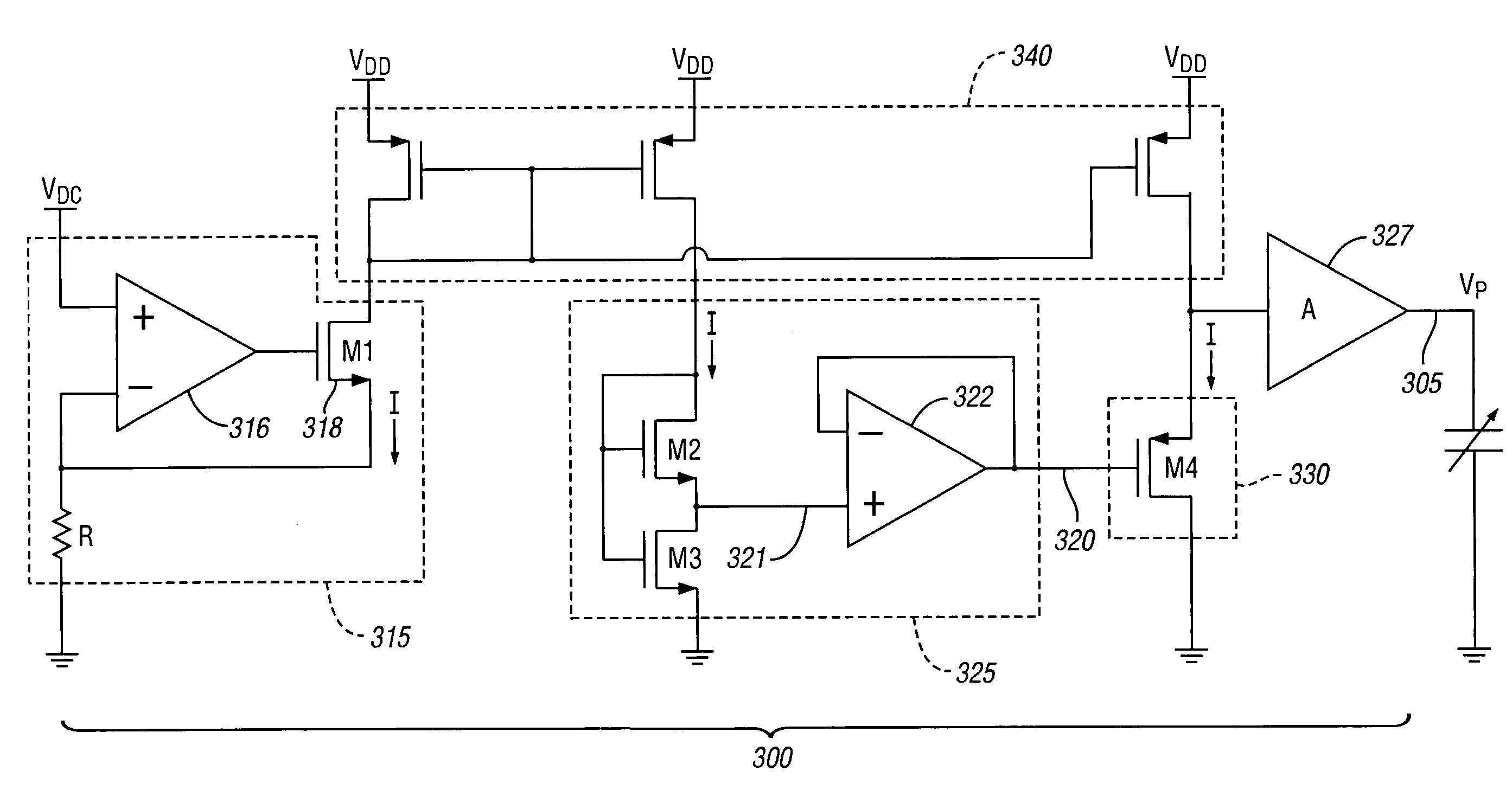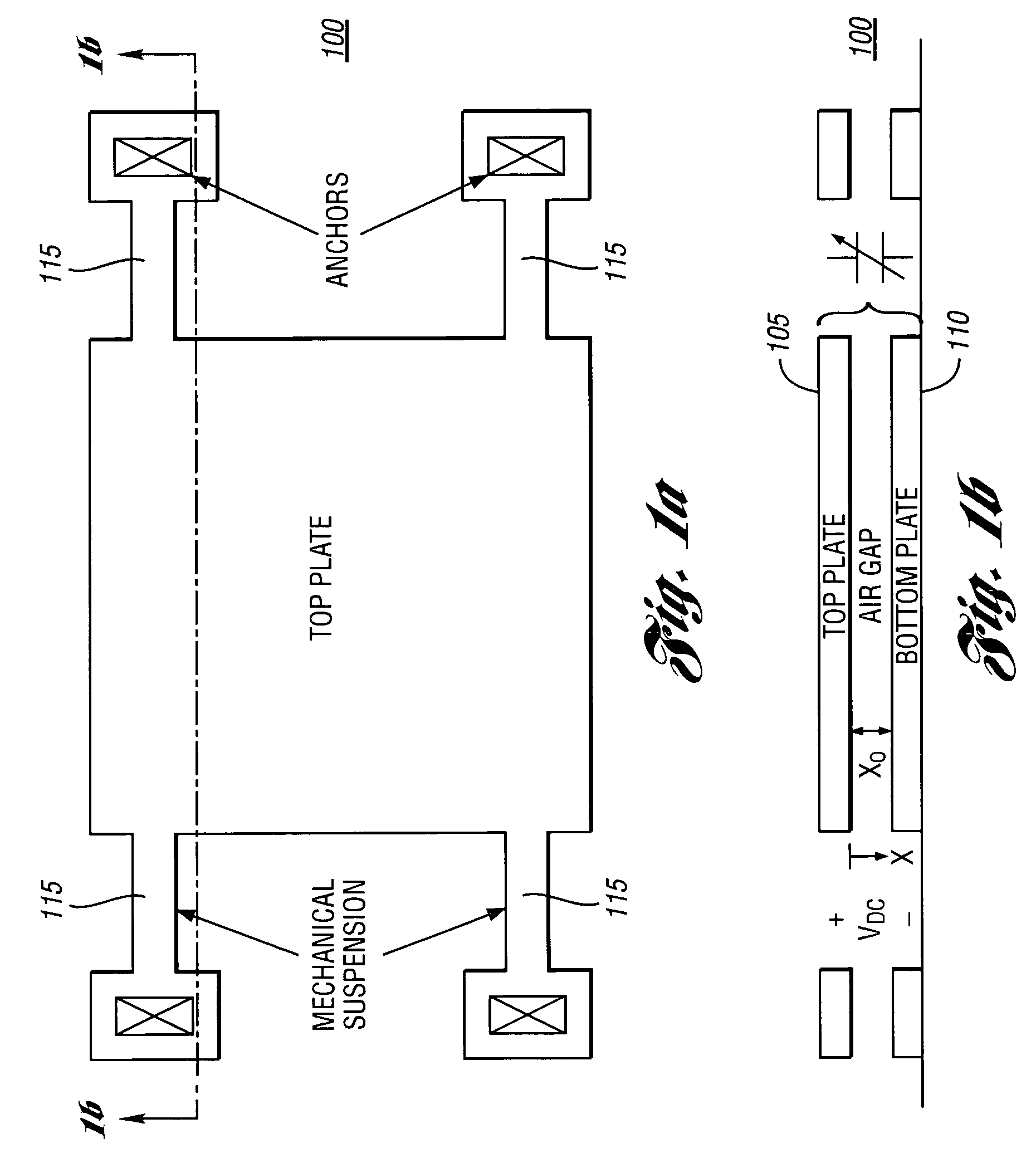Linearizing apparatus and method
a linearizing apparatus and linearization technology, applied in the direction of electric variable regulation, process and machine control, instruments, etc., can solve the problems of inability to accurately store coefficients, comparatively difficult to achieve, and high nonlinear tuning or frequency response of plate topology as a function,
- Summary
- Abstract
- Description
- Claims
- Application Information
AI Technical Summary
Benefits of technology
Problems solved by technology
Method used
Image
Examples
first embodiment
Hence, if the input tuning voltage is preprocessed (to form an applied voltage) by applying a square root function (i.e., Vp=VDC1 / 2), the relationship between the input tuning voltage and x would be then be nearly linear for small x. This first embodiment in accordance with the present invention resulted in a correlation coefficient (R2) of 0.9870 between the achieved response and the least squares linear fit to the function (these results are illustrated in FIG. 4 as the “square root preprocessor” curve).
second embodiment
[0062]More accurate linearization was achieved in accordance with the present invention by expanding Equation 11 to show the relationship between VDC and x is (Equation 14):
[0063]VDC=2kmɛA(xxo-x32)=ax-bx32
where a and b are constants. Although a square-root function is capable of being implemented with CMOS electronics, it is quite difficult to realize a 3 / 2 power function. In accordance with the present invention, it was determined empirically that Equation 14 can be well approximated, utilizing a logarithmic function instead of the 3 / 2 power function, by the following (Equation 15):
[0064]ax-bx32≈cx+dln(xe)
where x is greater than 1 and a, b, c, d, and e are constants selected such that the fit is accurate. The preprocessed, applied voltage is then of the form (Equation 16):
[0065]VP=cVDC+dln(VDCe)
where c, d, and e were chosen to provide an accurate fit. In accordance with the present invention, the natural logarithm as an approximation to the 3 / 2 power function ...
embodiment 500
[0089]FIG. 9 is a flow chart illustrating an exemplary linearizing method embodiment 500 in accordance with the present invention. As indicated above, this methodology may be performed by a processor 410, by the apparatuses 200 or 300, or by any other similarly or equivalently configured circuitry. The method may also be characterized as a method of pre-distorting a control signal to create an applied signal having a nonlinear relationship with a parameter (such as a circuit parameter) such that the control signal has a linear relationship with the parameter.
[0090]The method begins, start step 505, with reception of an input signal, such as an input voltage or input current. As mentioned above, depending upon the selected embodiment, conversion of the input signal may be necessary of desirable, such as conversion of an input voltage to an input current, or conversion of an analog input signal to a digital form, step 510. When such conversion is appropriate in step 510, the method pr...
PUM
 Login to View More
Login to View More Abstract
Description
Claims
Application Information
 Login to View More
Login to View More - R&D
- Intellectual Property
- Life Sciences
- Materials
- Tech Scout
- Unparalleled Data Quality
- Higher Quality Content
- 60% Fewer Hallucinations
Browse by: Latest US Patents, China's latest patents, Technical Efficacy Thesaurus, Application Domain, Technology Topic, Popular Technical Reports.
© 2025 PatSnap. All rights reserved.Legal|Privacy policy|Modern Slavery Act Transparency Statement|Sitemap|About US| Contact US: help@patsnap.com



